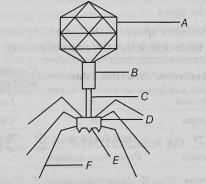
Microbes in Human Welfare NEET Questions
Microbes play an important role in human welfare by contributing to various processes that benefit health, industry and the environment. In the medical field, beneficial microbes are used in the production of antibiotics, vaccines and probiotics, which help in preventing and treating diseases. For instance, Lactobacillus species are widely used as probiotics to promote gut health, while Penicillium species are the source of penicillin, a groundbreaking antibiotic.
In agriculture, microbes are essential for enhancing soil fertility and promoting plant growth. Nitrogen-fixing bacteria like Rhizobium convert atmospheric nitrogen into a form that plants can absorb and use, thus enriching the soil with essential nutrients. Microbes also play a role in biocontrol by naturally suppressing pests and diseases in crops, reducing the need for chemical pesticides.
| NEET 2025 Exam Important Links | |
|---|---|
| NEET 2025 Updated Syllabus | How to read NCERT Biology for NEET |
| Biology Preparation | NEET Eligibility Criteria 2025 |
| NEET Preparation tips for 2025 | NEET Result 2024 |
Microbes in Human Welfare NEET Questions
The topic “Microbes in Human Welfare” is important in the NEET syllabus as it covers the diverse roles of microorganisms in various aspects of human life. Understanding the beneficial applications of microbes, such as their role in food production, antibiotics, biogas production and waste management, is essential for aspiring medical students. This knowledge helps students appreciate the symbiotic relationships between humans and microorganisms and their significant contributions to biotechnology and industry.
Microbes in Human Welfare NEET Questions


Enhance your preparation with Arexiq’s Mock Test Series where we provide solutions to various MCQs like we provide in this post “Microbes in Human Welfare NEET MCQ”. Our expert teachers explain the concepts thoroughly, making it easy for you to understand. We offer many types of questions ensuring a clear grasp of concepts.
FAQs
- What are microbes and their significance in human welfare?
Answer: Microbes are microscopic organisms that include bacteria, viruses, fungi and protozoa. They play an important role in human welfare by participating in processes like fermentation, decomposition and nitrogen fixation, and are used in the production of antibiotics, vaccines and enzymes.
- How do microbes help in the production of antibiotics?
Answer: Microbes such as bacteria and fungi produce substances that inhibit the growth of other microbes. These substances, known as antibiotics, are extracted and purified for use in treating bacterial infections. For example, Penicillium fungus produces penicillin, a widely used antibiotic.
- What is the role of microbes in the production of dairy products?
Answer: Microbes play a vital role in the production of dairy products like yogurt, cheese and buttermilk. Lactic acid bacteria such as Lactobacillus ferment lactose, the sugar in milk, into lactic acid, which helps in the coagulation of milk proteins, leading to the formation of products like yogurt.
- How are microbes used in waste management?
Answer: Microbes are essential in waste management processes like composting and sewage treatment. In composting, bacteria and fungi decompose organic waste into nutrient-rich compost. In sewage treatment, microbes break down organic matter, reducing pollution and producing biogas as a byproduct.
- What is the importance of microbes in biotechnology?
Answer: In biotechnology, microbes are used in genetic engineering to produce insulin, growth hormones and other therapeutic proteins. They are also employed in the production of biofuels, biopesticides and biodegradable plastics, contributing to sustainable development.
- Can microbes be harmful, and how are they controlled?
Answer: Yes, some microbes can cause diseases in humans, animals and plants. These harmful microbes, known as pathogens, can be controlled through various methods such as sterilization, disinfection, vaccination and the use of antibiotics and antifungal agents.
- What role do microbes play in nitrogen fixation?
Answer: Certain bacteria, such as Rhizobium and Azotobacter, can fix atmospheric nitrogen into a form that plants can absorb and use for growth. This process is essential for maintaining soil fertility and supporting agricultural productivity.
- How do microbes contribute to the food industry?
Answer: Microbes are used in the food industry for fermentation processes that produce foods like bread, beer, wine and pickles. Yeasts, for example, ferment sugars to produce alcohol and carbon dioxide, which are important in brewing and baking.
- What is the role of microbes in vaccine production?
Answer: Microbes or their components are used in vaccine production to stimulate the immune system to develop immunity against specific pathogens. For instance, the weakened or inactivated forms of viruses are used to produce vaccines against diseases like polio and influenza.
- How are microbes involved in the production of biogas?
Answer: In anaerobic conditions, certain bacteria decompose organic matter to produce biogas, a mixture of methane and carbon dioxide. Biogas is a renewable energy source used for heating, electricity generation, and as a fuel for vehicles.


